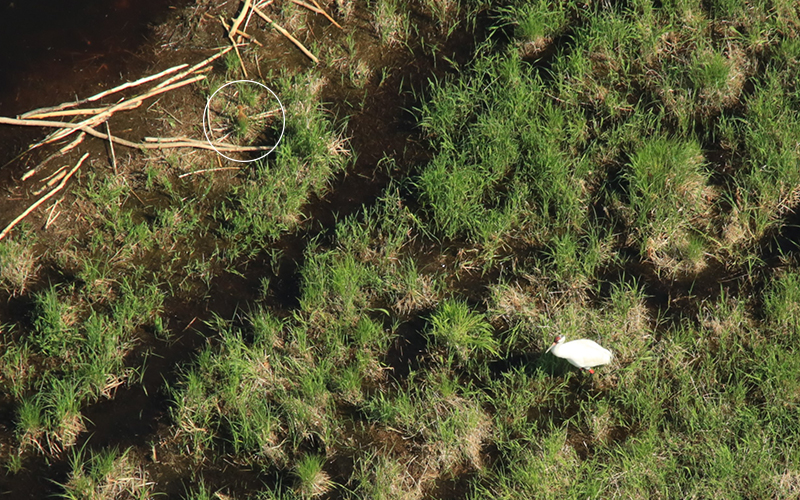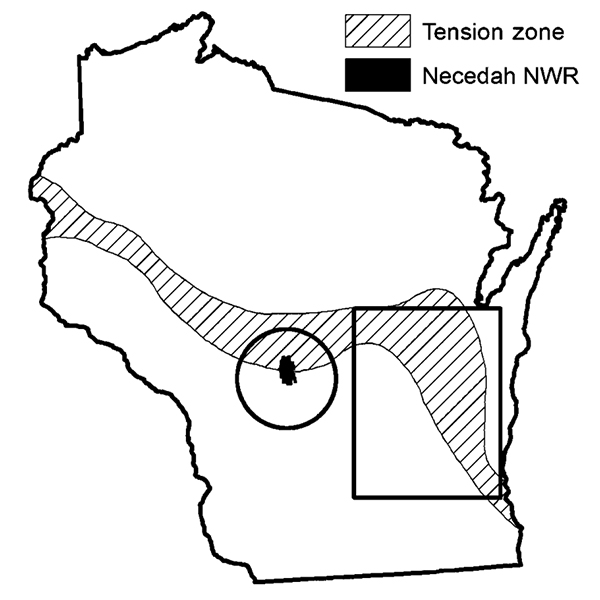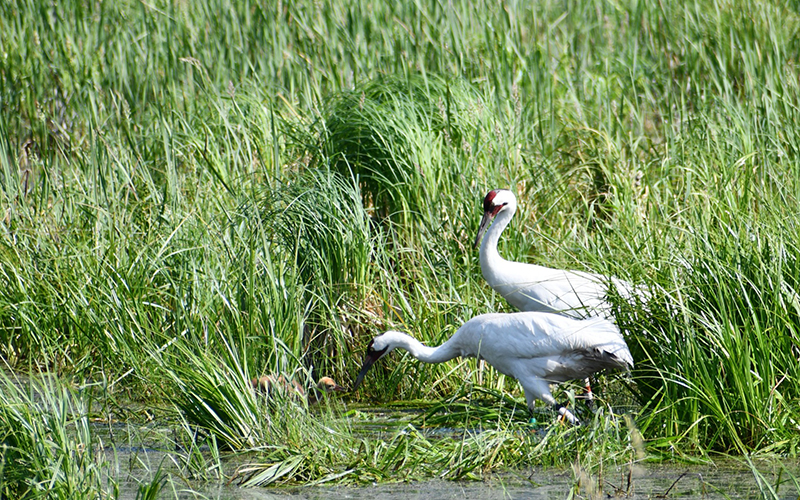Since the partnership to return Whooping Cranes to the eastern U.S. was formed in 2001, the number of Whooping Cranes in the Eastern Flyway has grown to around 75 individuals but has yet to reach the milestone of a self-sustaining population. In 2010, researchers at the International Crane Foundation began assessing how release sites were chosen for the species to determine if other areas were better suited to their needs.

Reintroductions in 2001 began at Necedah National Wildlife Refuge (NWR), a site chosen based on the historical distribution of Whooping Cranes and information gathered from prior research in Canada. These studies in Canada were limited to regions already occupied by Whooping Cranes, such as Wood Buffalo National Park, and primarily focused on the taiga. This biome is made mainly of boreal forests, has sustained no significant land use, and is not compatible with the upper tallgrass prairie of Wisconsin. However, historical records indicated previous Whooping Crane breeding grounds were present in Wisconsin along areas of transition from boreal forests to tallgrass prairies. Although the area has experienced significant land use change as wetlands were drained for agricultural development, Necedah NWR has remained within that valuable tension zone. Given the variety of habitats that remain relatively isolated from human disturbance, releasing Whooping Cranes at Necedah NWR would allow birds to travel short distances to find their preferred habitat.
After these initial releases, the population grew, but the productivity of nesting pairs remained an issue. Concerning soil types that prevented optimal foraging and the presence of black flies that resulted in nest abandonment led researchers to consider the suitability of Whooping Cranes to the refuge. Whooping Cranes exhibit high philopatry, meaning they return to the areas where they hatched. So, even if better habitat is available, they are not likely to disperse out of the refuge in search of it. Because of this, researchers had to consider new release sites that could support this growing population of Whooping Cranes.
A study by the International Crane Foundation was conducted to describe habitat selection by Whooping Cranes in Wisconsin at Necedah NWR. This information was then used to create a map of suitable habitat across Wisconsin and identify places for additional release efforts in the Eastern Migratory Population. Our team monitored Whooping Crane habitat selection and found pairs selected for emergent herbaceous wetlands, primarily when establishing home ranges and nesting territories. Beyond nesting territories, individuals selected more open upland habitat that could provide additional food resources in the early nesting season. In knowing these areas of preference, researchers looked for crossover areas because croplands near wetlands could be advantageous for foraging Whooping Cranes. Eastern Wisconsin was found to have more crossover of these two habitats than central Wisconsin, suggesting this area could be more productive for Whooping Cranes.

Using this newfound information, a habitat suitability map was created to identify potential locations to release Whooping Cranes and support breeding pairs in Eastern Wisconsin. Two large areas were initially ranked as highly suitable, the largest being Horicon Marsh; another highly suitable area included White River Marsh State Wildlife Area. These sites contain enough public lands to support reintroduction efforts but were assessed for future management implications from potential development and possible human-wildlife conflicts. Both were found to have large areas of quality habitat consisting of wetlands, open water, open uplands for additional foraging, and low human development – a recipe for the Whooping Crane’s success.
The International Crane Foundation began releasing Whooping Cranes at Horicon Marsh National Wildlife Refuge and White River Marsh State Wildlife Area from this research in 2011. At the time of this analysis, both locations ranked higher in suitability than Necedah NWR. Still, more work is needed to ensure the long-term success of this reintroduced Whooping Crane population. As a result, our team continues to monitor Whooping Crane habitat use in the Eastern Flyway to shed more light on what spaces they are using and inform future protection of the most valuable habitats.

Reference:
Story submitted by Hannah MacInnes, Crane Conservation Fellow, and Stephanie M. Schmidt, Lead Outreach Biologist, International Crane Foundation.
- Van Schmidt, N. D., J. A. Barzen, M. J. Engels, and A. E. Lacy. 2014. Refining Reintroduction of Whooping Cranes with Habitat Use and Suitability Analysis. Journal of Wildlife Management 78(8):1404-1414.
